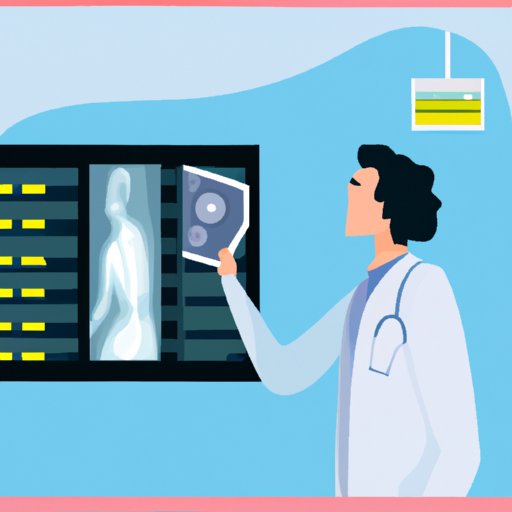Introduction
Radiology is a medical field that specializes in using imaging tests such as X-rays, CT scans, ultrasounds, and MRIs to diagnose and treat diseases. It’s an important branch of medicine, and radiologists play a crucial role in patient care. In recent years, artificial intelligence (AI) has emerged as a powerful tool for medical diagnosis, and many have wondered if AI could eventually replace radiologists.
Examining the Possibility of AI Replacing Radiologists
AI is already being used in various aspects of healthcare. According to a study published in the journal Nature Medicine, AI can be used to detect certain types of cancers with greater accuracy than human radiologists. AI systems are also capable of performing complex tasks such as reading MRI scans and diagnosing conditions like Alzheimer’s disease. With these capabilities, it’s no surprise that many are asking if AI could eventually replace radiologists.

Exploring the Benefits of AI in Radiology
There are several potential benefits of using AI in radiology. For starters, AI systems are able to process large amounts of data quickly and accurately. This means that AI-powered radiology systems could potentially diagnose patients faster and more accurately than human radiologists. Additionally, AI systems can be programmed to recognize patterns and spot anomalies in images that may be too subtle for human radiologists to detect.
Analyzing the Drawbacks of AI in Radiology
Despite the potential benefits of using AI in radiology, there are also some drawbacks. For one, AI systems require a lot of data to be trained properly. This means that they may not be as effective in areas where there is limited access to data or medical records. Additionally, AI systems are only as good as the data they are given, so if the data is incomplete or incorrect, the system may not be able to make accurate diagnoses.
Examining the Impact of AI on Radiology Professionals
As AI becomes more advanced, it’s likely that it will have an impact on radiology professionals. There is a possibility that AI could replace human radiologists in some cases, which could lead to job losses. However, it’s also possible that AI could enable radiologists to work more efficiently, allowing them to focus on more complex tasks and freeing up time for other duties.
Assessing the Potential for AI to Replace Human Radiologists
At this point, it’s difficult to say definitively whether AI will completely replace human radiologists. According to a study published in the journal Diagnostic Imaging, AI has the potential to reduce the workload of radiologists, but it may not be able to fully replace them. The authors of the study concluded that “AI may reduce the workload of radiologists, but it is unlikely that AI alone will replace radiologists.”
Analyzing the Effects of AI on Radiology Job Security
The effects of AI on radiology job security remain to be seen, but it’s likely that the introduction of AI will lead to some changes in the field. According to a study published in the journal Academic Radiology, AI could lead to job losses in some areas, but it could also create new jobs in others. The authors of the study concluded that “the introduction of AI into radiology may lead to job displacement in some areas, but it also has the potential to create new roles and opportunities for radiologists.”
Assessing the Benefits and Drawbacks of AI-Powered Radiology
When considering the use of AI in radiology, it’s important to consider both the potential benefits and drawbacks. On the one hand, AI could potentially increase efficiency and reduce errors in radiology. On the other hand, it could also lead to job losses and increased costs.
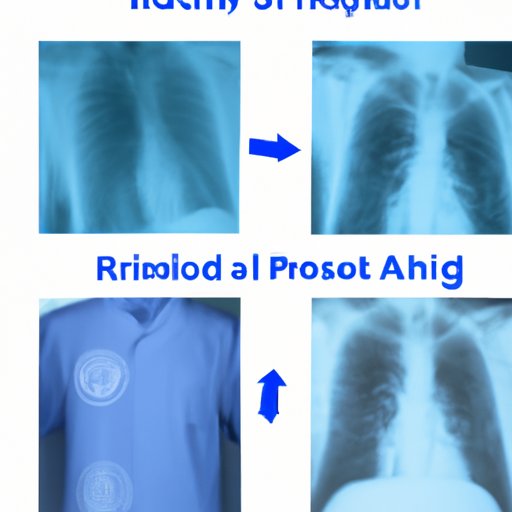
Pros of AI in Radiology
One of the main benefits of AI in radiology is that it could potentially increase efficiency. According to a study published in the journal Applied Radiology, AI systems can process large amounts of data quickly and accurately, allowing them to diagnose patients faster than human radiologists. Additionally, AI systems can be programmed to recognize patterns and spot anomalies in images that may be too subtle for human radiologists to detect. This could potentially reduce the number of misdiagnoses and improve patient outcomes.
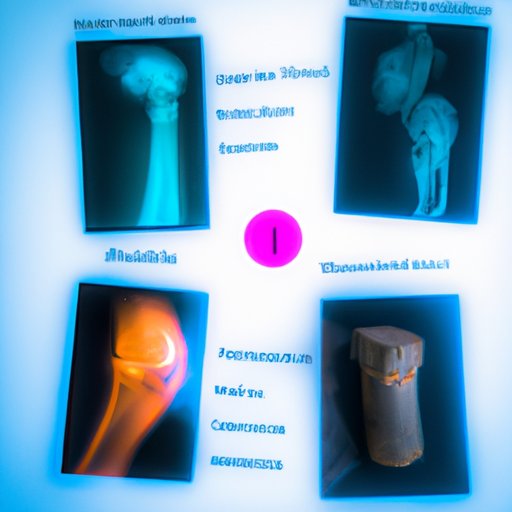
Cons of AI in Radiology
Although there are potential benefits to using AI in radiology, there are also some drawbacks. One of the biggest drawbacks is the cost associated with implementing AI systems. Additionally, AI systems require a lot of data to be trained properly, which can be difficult to obtain in some areas. Finally, AI systems are only as good as the data they are given, so if the data is incomplete or incorrect, the system may not be able to make accurate diagnoses.
How AI Could Change the Face of Radiology
AI has the potential to dramatically change the way radiology is practiced. By increasing efficiency and reducing errors, AI could make radiology more accurate and reliable. Additionally, AI could potentially reduce the need for human radiologists in some cases, which could lead to job losses. However, it’s also possible that AI could create new jobs in other areas.
AI’s Potential to Increase Efficiency in Radiology
One of the primary ways AI could change the face of radiology is by increasing efficiency. AI systems can process large amounts of data quickly and accurately, allowing them to diagnose patients faster than human radiologists. Additionally, AI systems can be programmed to recognize patterns and spot anomalies in images that may be too subtle for human radiologists to detect.
AI’s Potential to Reduce Errors in Radiology
AI systems could also potentially reduce errors in radiology. According to a study published in the Journal of American Medical Association, AI systems can detect certain types of cancers with greater accuracy than human radiologists. This could potentially reduce the number of misdiagnoses and improve patient outcomes.
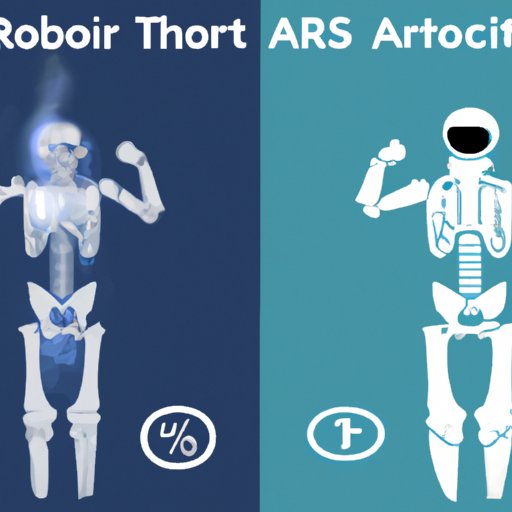
The Pros and Cons of AI vs Human Radiologists
When considering the use of AI in radiology, it’s important to weigh the pros and cons of using AI over human radiologists. On the one hand, AI systems can process large amounts of data quickly and accurately, allowing them to diagnose patients faster than human radiologists. On the other hand, AI systems require a lot of data to be trained properly, which can be difficult to obtain in some areas.
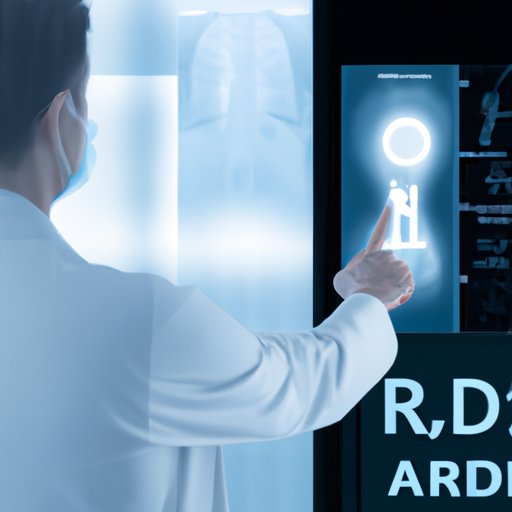
Advantages of Using AI Over Human Radiologists
One of the main advantages of using AI over human radiologists is that AI systems can process large amounts of data quickly and accurately, allowing them to diagnose patients faster than human radiologists. Additionally, AI systems can be programmed to recognize patterns and spot anomalies in images that may be too subtle for human radiologists to detect. This could potentially reduce the number of misdiagnoses and improve patient outcomes.
Disadvantages of Using AI Over Human Radiologists
One of the main disadvantages of using AI over human radiologists is the cost associated with implementing AI systems. Additionally, AI systems require a lot of data to be trained properly, which can be difficult to obtain in some areas. Finally, AI systems are only as good as the data they are given, so if the data is incomplete or incorrect, the system may not be able to make accurate diagnoses.
Conclusion
In conclusion, AI has the potential to revolutionize radiology and improve patient outcomes. AI systems can process large amounts of data quickly and accurately, allowing them to diagnose patients faster than human radiologists. Additionally, AI systems can be programmed to recognize patterns and spot anomalies in images that may be too subtle for human radiologists to detect. However, it’s important to consider the potential drawbacks of using AI in radiology, including the cost associated with implementation and the potential for job losses.
Summary of Findings
This article explored the possibility of AI replacing radiology and examined the potential benefits and drawbacks of AI-powered radiology. It also assessed the impact of AI on radiology professionals, and evaluated the pros and cons of AI vs human radiologists. Overall, it appears that AI has the potential to revolutionize radiology and improve patient outcomes, but it’s important to consider the potential drawbacks before implementing AI systems.
Final Thoughts
It’s clear that AI has the potential to revolutionize radiology and improve patient outcomes. However, it’s important to consider the potential drawbacks of using AI in radiology before implementing AI systems. For now, it appears that AI and human radiologists will continue to work together to ensure accurate diagnoses and improved patient outcomes.
(Note: Is this article not meeting your expectations? Do you have knowledge or insights to share? Unlock new opportunities and expand your reach by joining our authors team. Click Registration to join us and share your expertise with our readers.)
